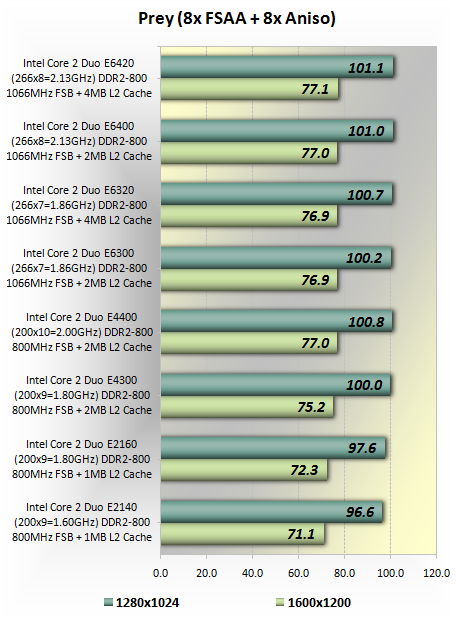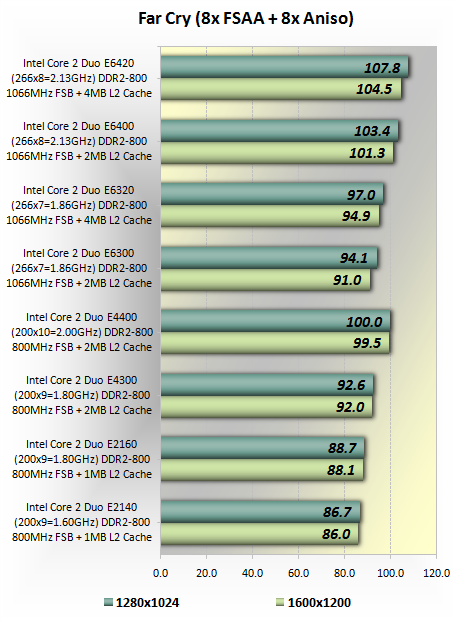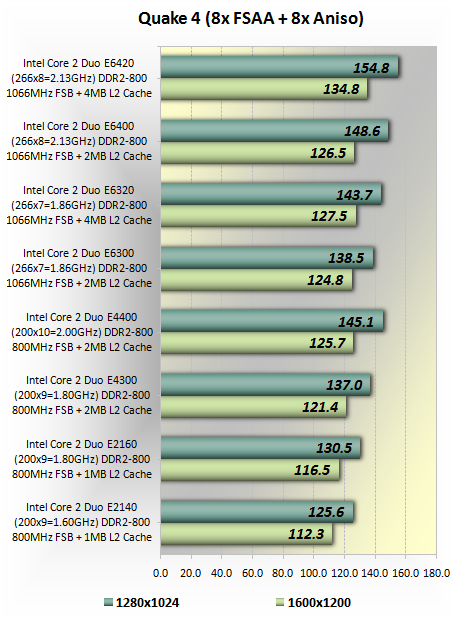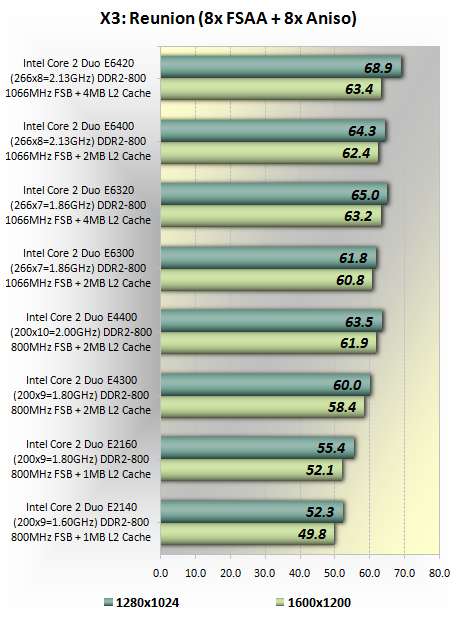Gaming Performance

The E4300 is 3fps faster than the E2160 at 1600x1200, which is due to the larger L2 cache, given both processors work at the same frequency. The E2140 is just 1fps slower than the E2160 at this very same resolution. Prey only shows an 8% performance difference between the E2140 and the E6420 at 1600x1200, which is really fairly insignificant.

Far Cry shows much larger performance margins when compared to Prey. For example at 1600x1200 the E6420 is 24% faster than the E2140, which is a very significant performance margin. The E4300 is 4fps faster than the E2160, though this is just a 4.5% performance margin. Again the E2140 is only slightly slower than then E2160, this time just 2fps separates the two E2000 processors.

Quake 4 shows a significant difference in performance between the 1.80GHz clocked E4300 and E2160 processors. Due to the smaller 1MB L2 cache the E2160 was 7fps slower at 1280x1024 and 15fps slower than the E4400. While the E2140 was just 5fps slower than the E2160 and 20% slower than the E6420.

Finally the last game we tested the new Pentium E2000 processors in was X3: Reunion and here we have similar performance margins to those seen in Far Cry. The E2160 was 5fps slower than the E4300. The E2140 was just 3fps slower than the E2160, while it was 32% slower than the E6420!